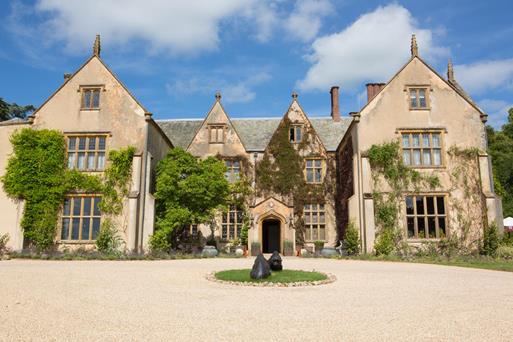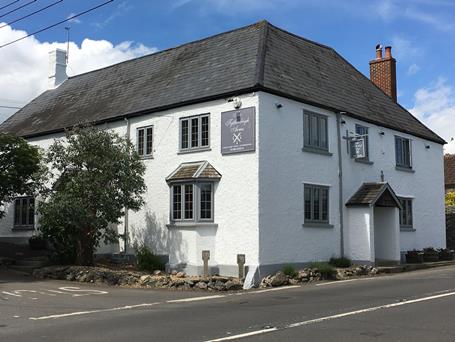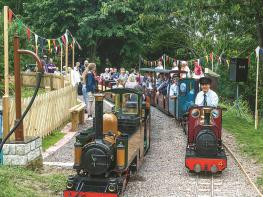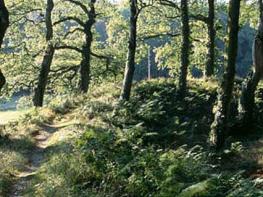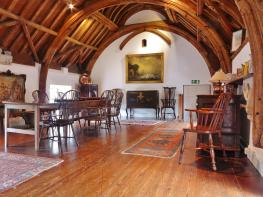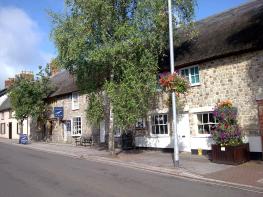Annie and Elizabeth are two mobile homes located on Park Gate House Farm, a working dairy farm,…
The River Coly and the Umborne Brook

The tranquil East Devon town of Colyton has a turbulent history.
5 miles (8kms)
About the walk
In some ways the pretty east Devon town of Colyton is a rather misleading place. Situated in rolling countryside on the banks of the River Coly, the town has more than once won ‘the prettiest village in Devonshire’ accolade. The narrow, winding streets, attractive cottages, with hanging baskets and colourful gardens, give no clues as to why Colyton was once dubbed ‘most rebellious town in Devon’. For this we must go back to the 1600s. The town supported Parliament in the Civil War in 1643, and was the scene of many skirmishes against Royalists based at Axminster. It also played a part in the Monmouth Rebellion of 1685, when more than 100 Colyton men – more than anywhere else in Devon – joined the Duke of Monmouth’s army. Monmouth landed at Lyme Regis with 80 followers and managed to raise an army of 3,000, but was defeated by James II’s army at Sedgemoor near Bridgwater in Somerset. In the trials that followed, the ‘Bloody Assizes’, 17 Colyton men were hanged, and 18 were transported to the West Indies. Only two of the latter made it back to Devon.
But Colyton’s history hasn’t always been so colourful. There is evidence of prehistoric occupation – a Pleistocene flint axe as well as Bronze and Iron Age remains have been found locally. The Romans were here from around ad 70, but Colyton is essentially a Saxon town. Egbert, King of Wessex, held a parliament here in ad 827 and a fine restored 9th-century cross can be seen in the church. The town developed into one of Devon’s major commercial centres, its wealth based on weaving cloth, silk and serge, and lacemaking. Many of the farms you’ll pass on this walk have the suffix hayne, meaning ‘enclosure’.
The parish church is prominent in the view of Colyton towards the end of the walk and its most unusual feature is the distinctive and rare octagonal lantern, set on the square Norman tower. This is thought to have been inspired by similar towers seen in Flanders by the town’s wool merchants. There is a merchant’s mark (representing a ‘stapler’ or wool merchant) on the floor slate marking the grave of Hugh Buckland in the chancel.
Walk directions
From the car park turn right downhill, then left into Lower Church Street. Turn left at the Gerrard Arms into St Andrews Square, then right into Vicarage Street. Go right, towards the river, and cross the bridge.
Turn left through a kissing gate and along the river bank on the East Devon Way (EDW). Follow the path through two kissing gates. Ignore the next footpath sign right, but keep ahead over a footbridge and through a small gate.
Keep ahead to a footpath junction at the field end; go through the kissing gate ahead on to a concrete riverside path. Go through a kissing gate and cross the field, aiming for a kissing gate/footbridge under three big oaks. Keep ahead to cross another footbridge to reach a footpath junction by a bridge over the river.
Turn right (leaving EDW), to reach a gate on to a lane and turn right. Opposite Cadhayne Farm turn left through a gate. Walk steadily up the left field edge, through the gate at the top and straight on. This green lane soon bears sharp left; bear right along a narrow, muddy track, ending at a tarmac road.
Cross over, pass Tritchayne Farm Cottages and walk downhill along Watery Lane. Just after Tritchmarsh Farm follow the footpath sign right across a stream. Go sharp left to a gate and keep along the left field edge. Take the small gate/bridge/gate and cross the paddock and the Umborne Brook via a stile and concrete walkway to Lexhayne Mill. The path runs between the house and yard to a kissing gate; cross the stile in the wire fence (the main line railway is ahead). Cross over the next stile, then head diagonally right for the drive to Lexhayne Farm. Cross a stile, and keep ahead through a hedge gap.
Cross the field diagonally right to a bridge in the bottom corner. Marshy ground leads to a big footbridge over the brook. Turn left; cross a stile, then follow the brook to another footbridge.
Aim for a stile in the fence ahead right. Bear diagonally left and cross the brook on a footbridge. Follow the fenced path left; bear right over a stile into a field. Turn left along the hedge; pass through a gate, and keep ahead to a stile. Bear diagonally right up a huge field, aiming to the right of Road Green Farm to find a stile onto a lane.
Turn left; pass the picnic area/ playground at Road Green, then over the bridge. Take the first left (Vicarage Street) and go straight on to pass the church (left), through the town centre and down Silver Street to the car park.
Additional information
Fields and lanes, some parts boggy after wet weather, several stiles
Level river meadows and rolling farmland
Keep on lead in fields with livestock
OS Explorer 116 Lyme Regis & Bridport
Car park in centre of Colyton (Dolphin Street)
At car park
WALKING IN SAFETY
Read our tips to look after yourself and the environment when following this walk.
Find out more
Also in the area
About the area
Discover Devon
With magnificent coastlines, two historic cities and the world-famous Dartmoor National Park, Devon sums up all that is best about the British landscape. For centuries it has been a fashionable and much loved holiday destination – especially south Devon’s glorious English Riviera.
Close to the English Riviera lies Dartmoor, one of the south-west’s most spectacular landscapes. The National Park, which contains Dartmoor, covers 365 square miles and includes many fascinating geological features – isolated granite tors and two summits exceeding 2,000 feet among them.
Not surprisingly, in Dartmoor the walking opportunities are enormous. Cycling in the two National Parks is also extremely popular and there is a good choice of off-road routes taking you to the heart of Dartmoor and Exmoor. Devon’s towns and cities offer stimulating alternatives to the rigours of the countryside.
Nearby stays
Restaurants and Pubs
Nearby experiences
Recommended things to do
Why choose Rated Trips?
Your trusted guide to rated places across the UK
The best coverage
Discover more than 15,000 professionally rated places to stay, eat and visit from across the UK and Ireland.
Quality assured
Choose a place to stay safe in the knowledge that it has been expertly assessed by trained assessors.
Plan your next trip
Search by location or the type of place you're visiting to find your next ideal holiday experience.
Travel inspiration
Read our articles, city guides and recommended things to do for inspiration. We're here to help you explore the UK.



